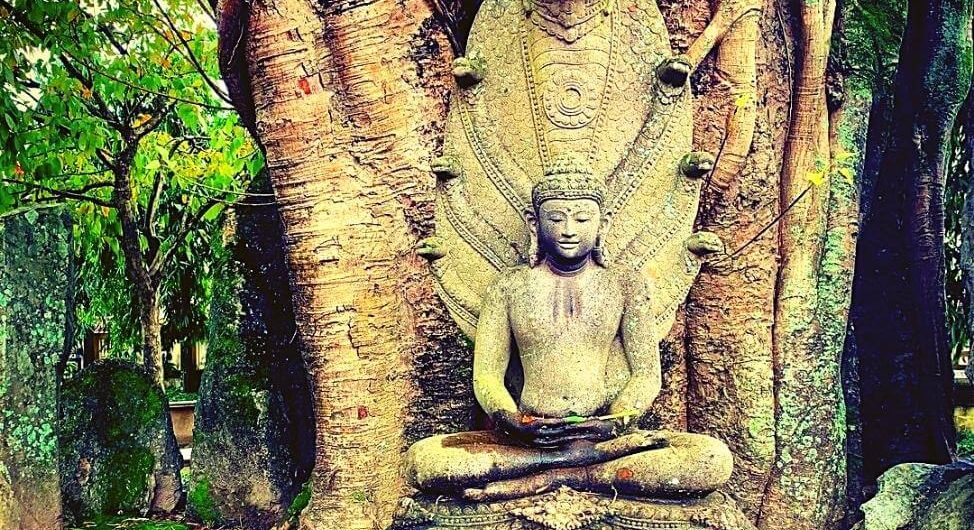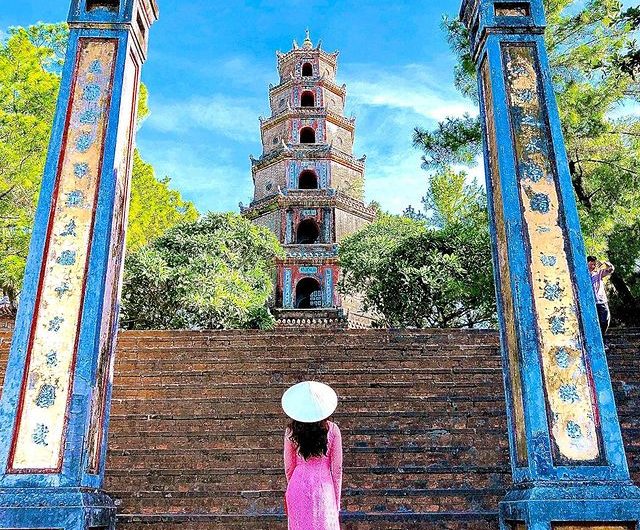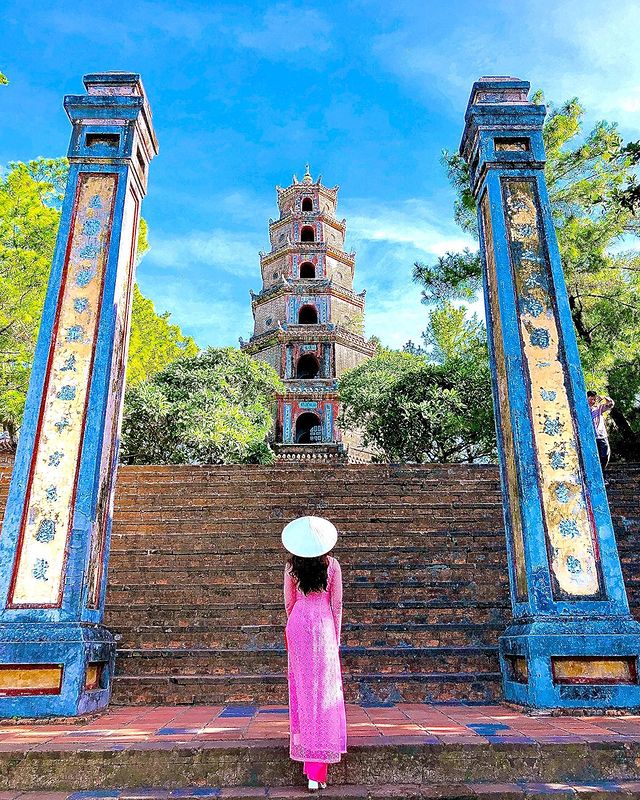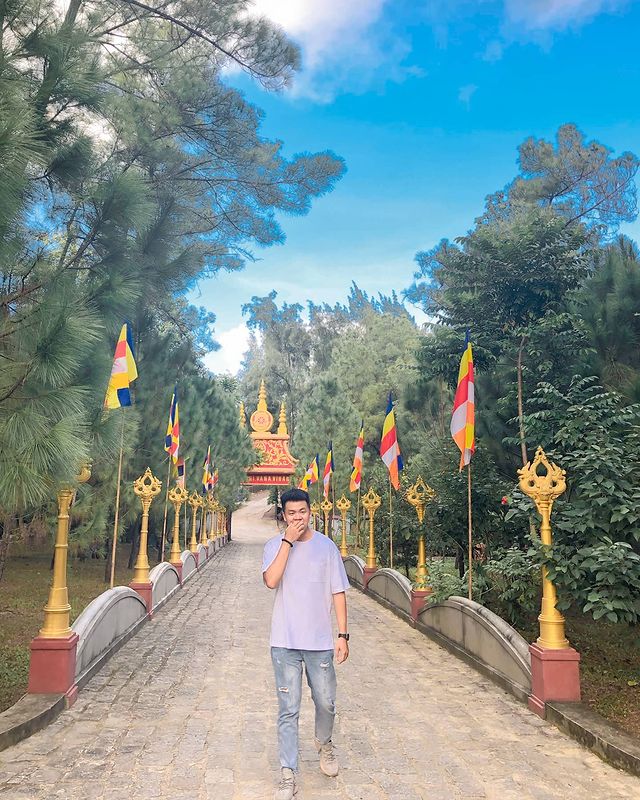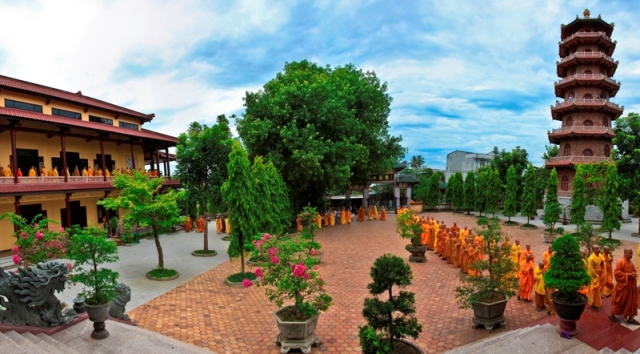Tu Dam Pagoda is a unique temple that harmoniously blends the lines of old and new artistic architecture. The temple bears the mark of a long history of preserving and developing Buddhism and is a venue for organizing major events, conferences, and annual festivals.
Today, Tu Dam Pagoda has become a place for Buddhist studies and a place to welcome esteemed Buddhist leaders. The temple has a tranquil and serene appearance, exuding a sense of calmness and purity. Let’s learn more about this place in this article.
What is beautiful about the architecture of Tu Dam Pagoda?
Although it has undergone many renovations, this place still retains many ancient architectural features. The temple is built in a spacious and airy space surrounded by lush green trees. The temple’s architecture consists of three important parts: Tam Quan Gate, Main Pagoda, and Assembly Hall, in addition to the temple’s courtyard and An Ton Tower with a relatively attractive design.
Tam Quan Gate of Tu Dam Pagoda
The Tam Quan Gate has three entrances, with one main gate and two side gates designed with the temple’s name engraved on them. The Tu Dam Pagoda gate is roofed with tiles and the pillars are made of very sturdy stone. According to the culture of the ancient Vietnamese, Tam Quan Gate carries the meaning of “three gates of liberation,” which means passing through the gate will help rid one of greed, anger, and ignorance in life to step into the temple feeling peaceful and relieved. Therefore, like many other temples, Tu Dam Pagoda’s design of the ancient Tam Quan Gate aims to bring moments of tranquility to visitors who come to worship or sightsee.
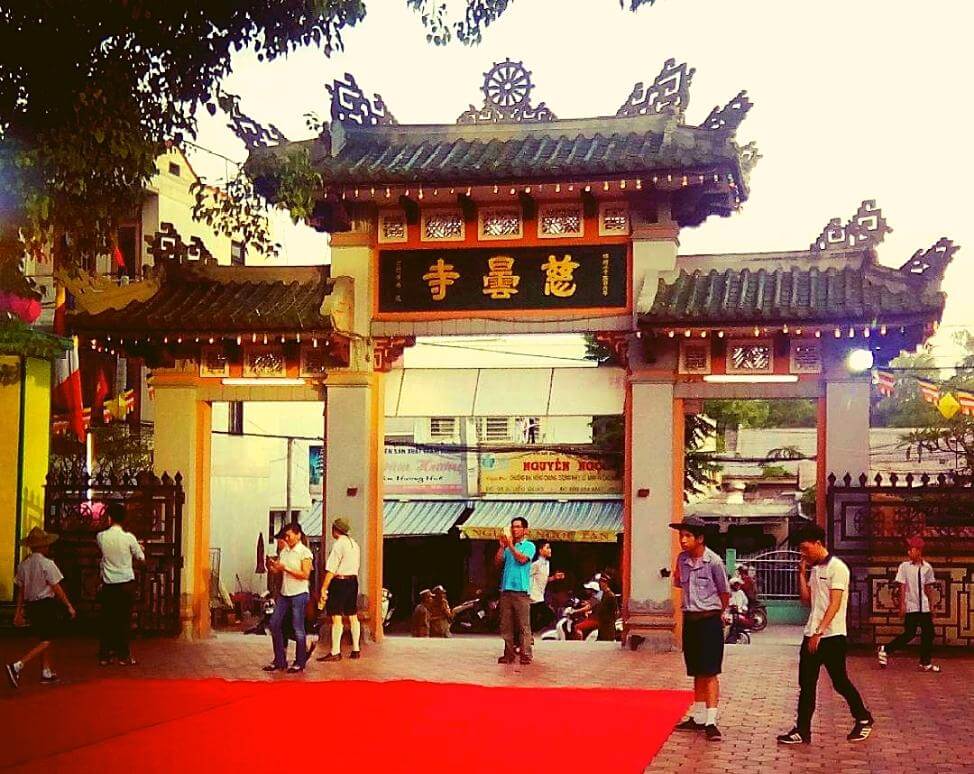
Tu Dam Pagoda Courtyard
After passing through the Tam Quan Gate, visitors will immediately see the temple’s very large courtyard. The temple courtyard is paved with flat stones, clean, and on the right side of the gate is a large ancient Bodhi tree with a lifespan of hundreds of years. The Bodhi tree at Tu Dam Pagoda was a gift from Mrs. Karpeles, President of the French Buddhist Association, and was planted in 1936. The origin of the Bodhi tree was extracted from the Bodhi tree where Buddha attained enlightenment. Therefore, this Bodhi tree has become a symbol of the vitality of Buddhism in general and the distinctive characteristics of Tu Dam Pagoda.
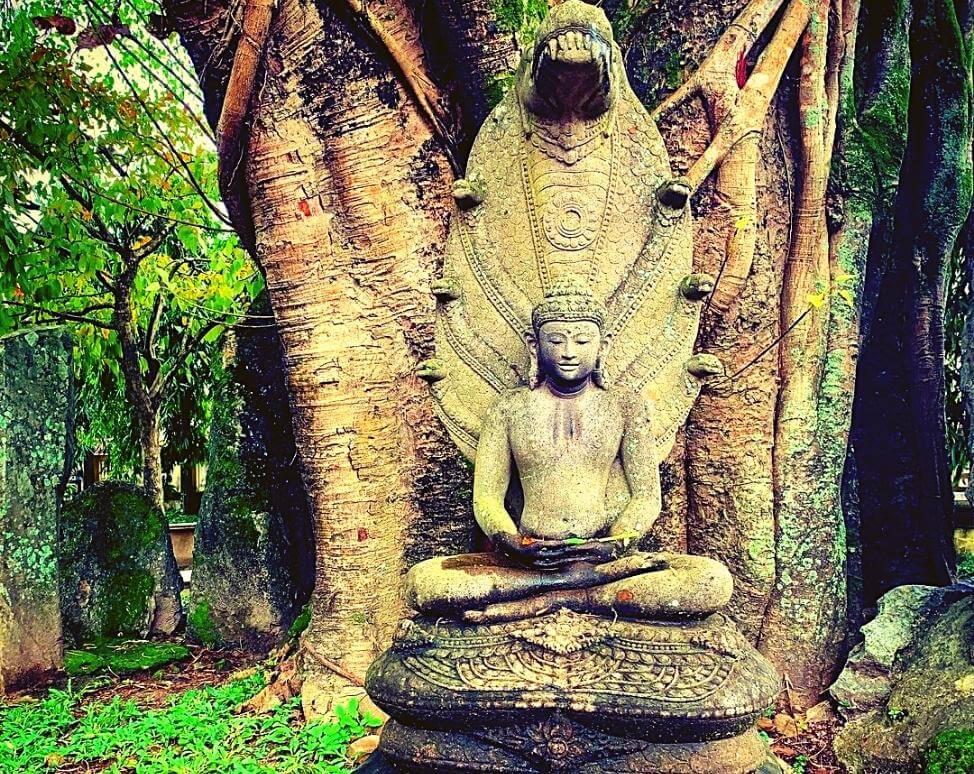
Each element contributes to creating a cool and relaxing space. Going deeper into the courtyard, there are various constructions such as the front hall, main hall, ancestral hall, An Ton Tower, and souvenir room.
Tien Duong Area.
Looking at the overall architecture of Tien Duong area, Tu Dam Pagoda has the following features:
- The roof has an ancient architecture with two symmetrically coiled dragons, and underneath the roof are statues of the Buddha placed on high stone pedestals.
- The columns are engraved with long and meaningful couplets that are exquisite in detail.
- On both sides of Tien Duong are two bell and drum towers.
- Tien Duong is built on a foundation made of granite stones, with a raised elevation of 1.5m above the ground.
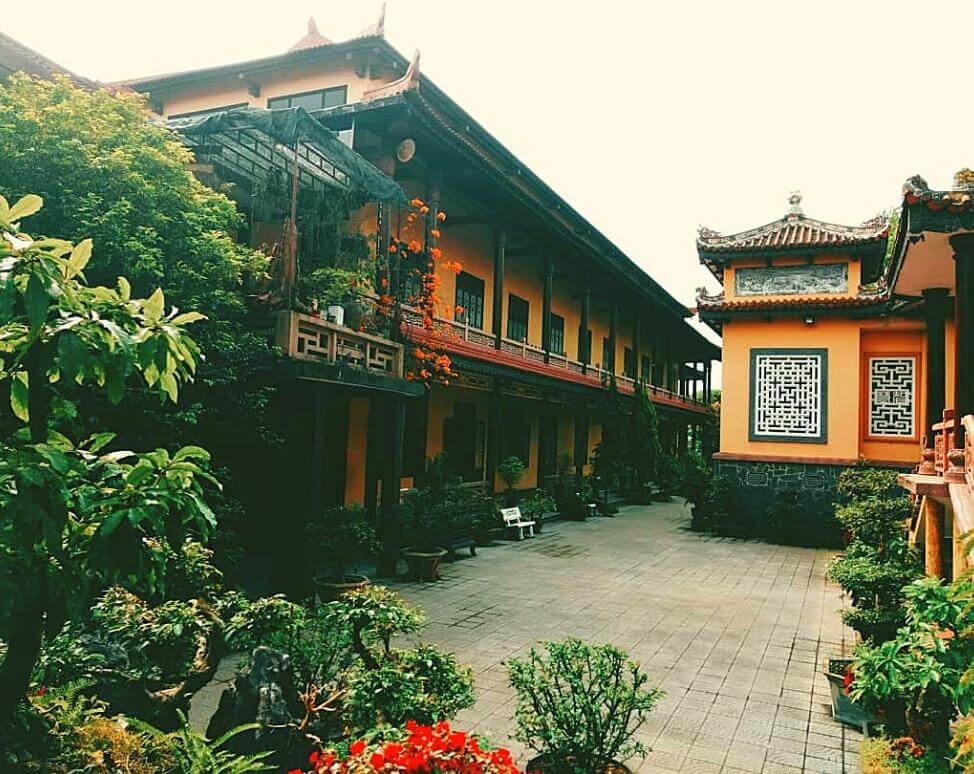
Main Hall and Ancestral House of Tu Dam Pagoda.
The main hall is designed in a simple yet solemn manner. In the middle stands a black statue of the Buddha Shakyamuni sitting on a lotus throne, holding the Mudra of the Three Jewels. On both sides are the Bodhisattvas Avalokiteshvara and Manjusri. Besides, to the right of the main hall is a guest house and the monks’ quarters, and behind them is the ancestral house area. In front of the guest house, there is a small garden with a statue of the monk Tam Minh (who made contributions to the revival and development of Vietnamese Buddhism).
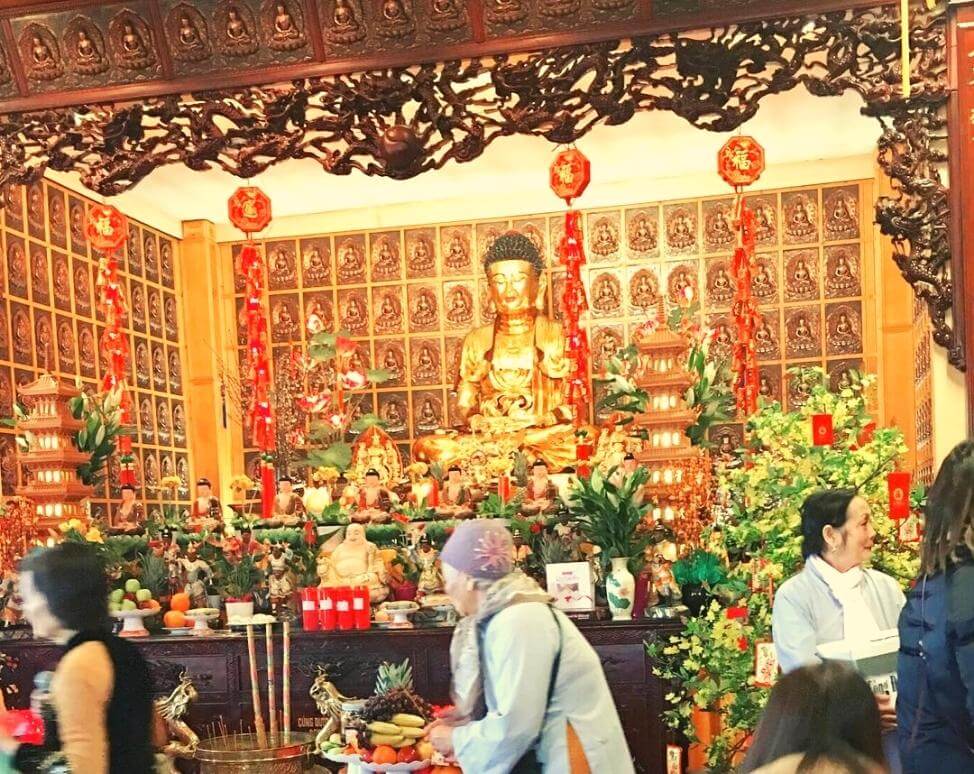
Indrastupa of Tu Dam Pagoda.
Indrastupa is located at the left corner of the Tam Quan gate, near the Dien Bien Phu road area, opposite the lecture hall. Indrastupa has 7 levels, is 27m tall, and has a small architectural style that gradually decreases in size as it reaches the top. At each level of the stupa, there is a bronze Buddha statue for worship.
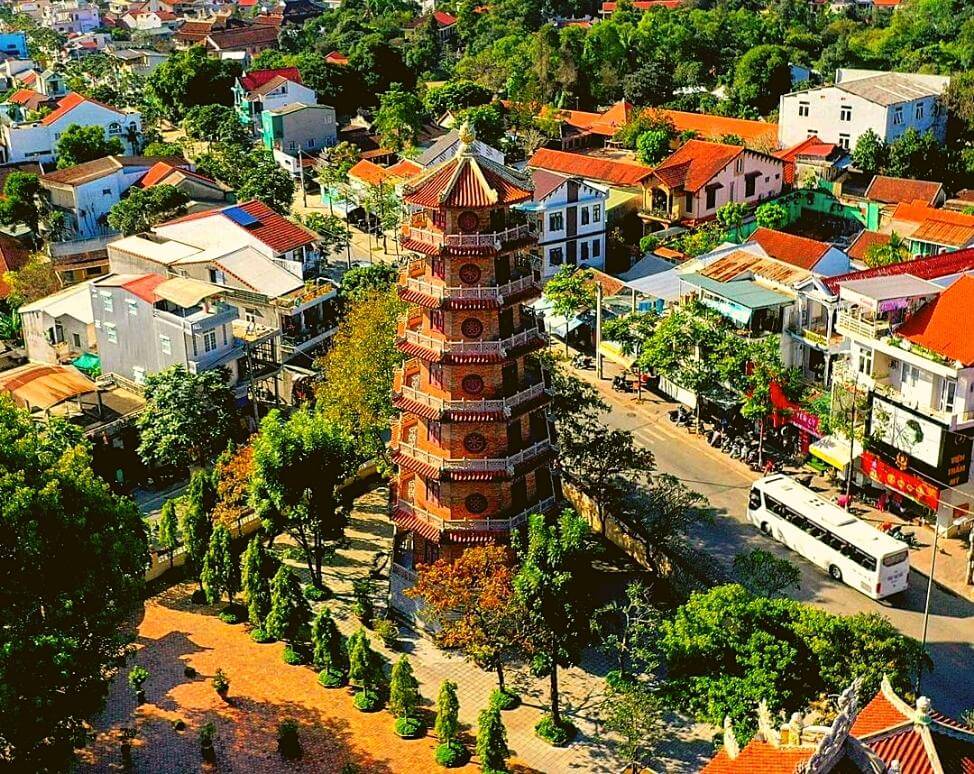
In addition, Tu Dam Pagoda is built with 3 floors, including a basement, a middle floor used as the office of the Buddhist Association of Thua Thien Hue province, and an upper floor used as a lecture hall, exhibition room, and seminar room. The memorial room of the pagoda is built to store artifacts and historical images of the pagoda. Visitors can come here to explore the history of the pagoda.
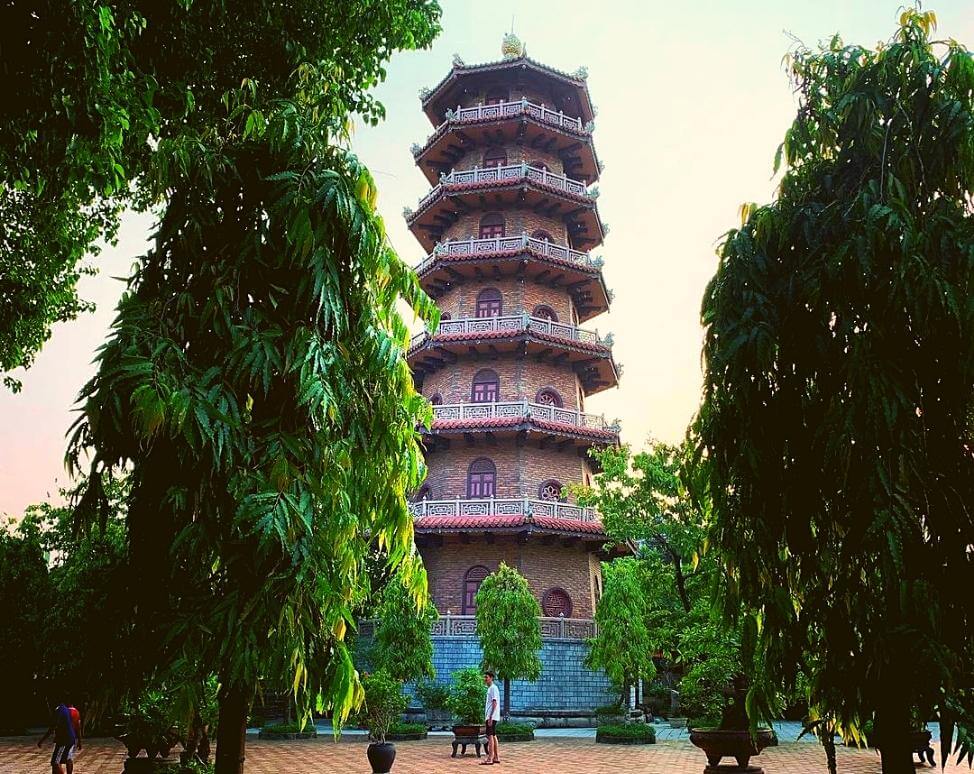
Explore the history of Tu Dam Pagoda.
In 1695, the pagoda was founded by Venerable Minh Hoang Tu Dung from China, a disciple of the 34th Lam Te Zen lineage. In 1703, the pagoda was named Sac Tu An Ton Tu, bestowed by Lord Nguyen Phuc Chu. After more than 100 years, in the reign of King Thieu Tri, the pagoda was renamed “Tu Dam Tu” in 1841, meaning “pure and serene clouds”.
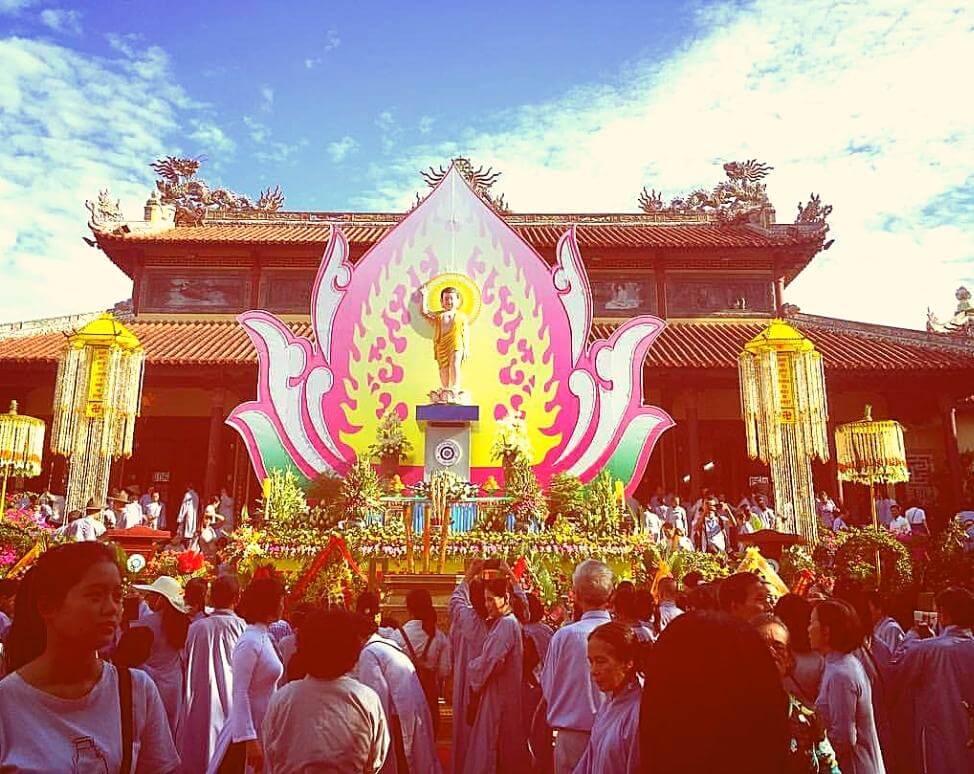
In the 20th century, in the 1930s, Tu Dam Pagoda was given to the An Nam Buddhist Society for restoration and architectural renovation. In addition, the pagoda was also known as the headquarters of Buddhism in the national salvation movement, preparing for the August Revolution. In 1951, the first unified Vietnam Buddhist Association was held with the participation of 51 delegates from all three regions of the country at Tu Dam Pagoda. From the 1960s until the country was liberated, the pagoda was also the starting point for the struggle against the Republic of Vietnam – Ngo Dinh Diem regime. Today, the pagoda is a popular destination for monks and Buddhists across the country to come for practice and activities.
Explore Hue with Hue City Tour by private car.
Where is Tu Dam Pagoda located?
The pagoda is located at 1 Su Lieu Quan, Truong An, Hue City, Thua Thien Hue. It sits on a flat land, surrounded by the Kim Phung mountain range, about 3 km from the center of Hue city.
How to get to Tu Dam Pagoda?
Bus: If you choose to take the bus to the pagoda, take route 05. However, pay attention and ask the driver for the stop you need.
Route 05: Southern Bus Station to Dong Ba Market – Tuần Market and vice versa.
Intersection of QL49, An Cuu – 15B Ha Noi – In Thong Ke – Thuong Bac – Dong Ba – Hue Central Hospital – Quoc Hoc High School – Hue Station – Bao Quoc Pagoda – Tu Dam Pagoda – Border Guard Base – Nam Giao Esplanade – Lim Bridge – Cu Chanh Intersection – Thien An – Thuy Bang Commune People’s Committee – Khai Dinh Tomb – Tuần Market.
In addition, you can hire a private car with our driver at an affordable price. A professional driver will take you on a journey to the best temple.
If you use your own vehicle, you need to loop around the back of Tu Dam Pagoda and park there.
- Admission fee: Free.
- Opening hours: 6:00 AM – 9:00 PM.
Tu Dam Pagoda has an ancient and tranquil appearance, but is also very attractive, leaving a deep impression on many visitors. Along with Thien Mu Pagoda, Hon Chen Palace, and Huyen Khong Son Thuong Pagoda, Tu Dam Pagoda is one of the famous spiritual tourism destinations in Hue. Despite numerous renovations, Tu Dam Pagoda has maintained its unique characteristics. Don’t forget to follow DanangPrivateCar.com’s to update information…

